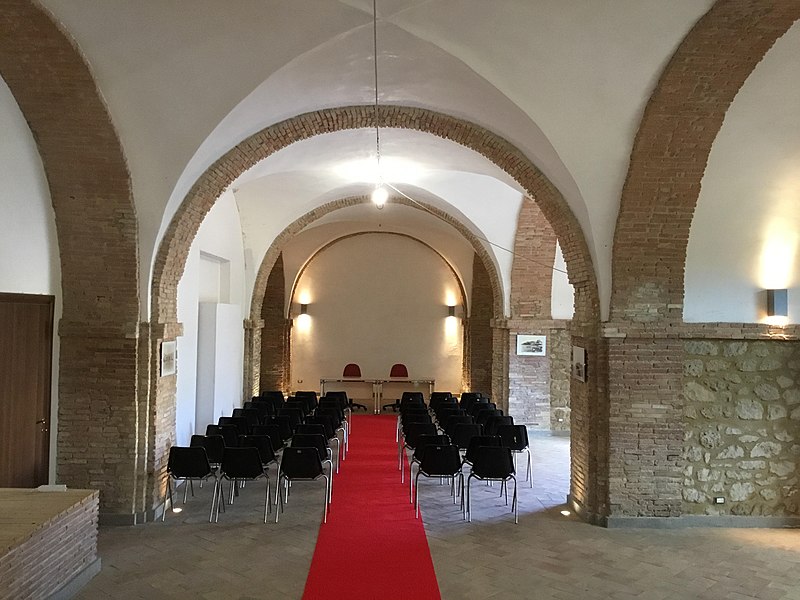- admin
- Nov, 09, 2024
- Places to visit
- Commenti disabilitati su 13. The Cascina

The large building, located on the street of the same name, dates back to the 17th century and was originally used as a stable for the “Cavalleria Farnesiana.” Its exterior is characterized by robust buttresses and a front staircase supported by three rounded arches, which were used to lead horses up to the upper floor, where grain storage (staje) was located.
The building consists of two floors: the ground floor housed the stables, separated by a central corridor, while the upper floor served as a granary and storage area for oil, wine, cheese, and other food products that were later transported to Rome or the Duchy of Parma and Piacenza. The vast and fertile territory of the Duchy of Castro and the County of Ronciglione was known as “the granary of Rome,” consistently supplying the Farnese court while facing increasing financial exploitation by the Ducal Chamber of Parma.
The term “cascina,” associated with Northern Italian culture, is likely connected to the expansion of the building that occurred when the Farnese moved north with their duchy in the mid-16th century. After a long period of abandonment, in 2000, the municipality initiated a restoration project that is still ongoing. The aim is to repurpose this large building for cultural initiatives such as exhibitions, conferences, concerts, markets, and readings held in the spacious hall on the ground floor. Additionally, small apartments are being created for public housing purposes. There are also plans for relocating the municipal library within this space.
Among the most significant events hosted at Cascina is the embroidery market exhibition “Il gioco dei fili,” promoted annually by the municipal school “L’ago di Capodimonte.” This event has become a staple of summer in Capodimonte.